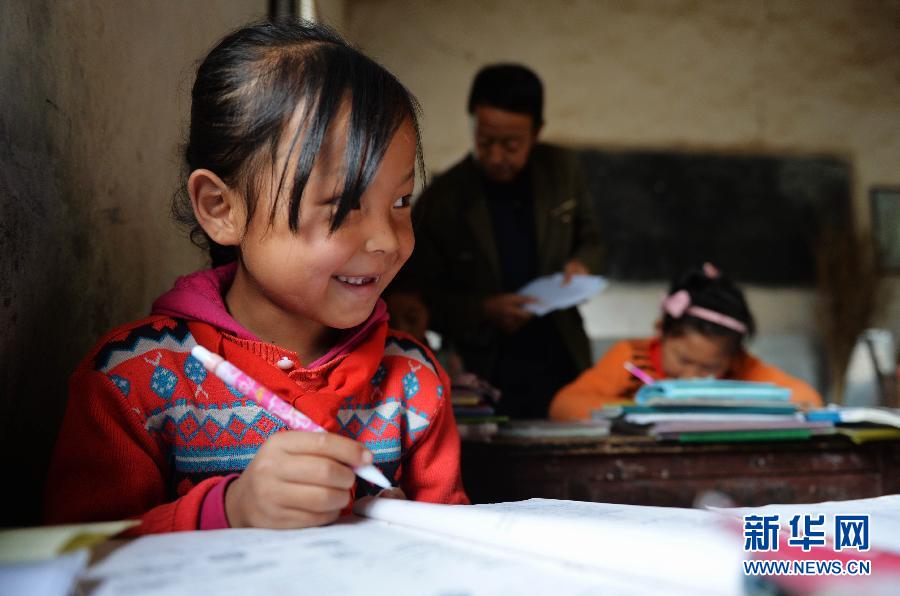The last mile of poverty alleviation through education
GPIG by Wu Zhihui, November 3, 2016 Adjust font size:
Editor's Note: Teaching points refer to schools in very remote and rural areas, often found deep inside mountainous areas and with very small facilities and few teachers and/or students.

Chinese President Xi Jinping has said many times that the main indicator for the formation of China’s well-off society is the living standards of farmers. Education is key in the battle against poverty in the country. In recent years, China has retained and recovered many teaching points in rural areas, but it has been slow in further constructing and developing them. The lack of schools has become the weakest link in the modernization of education in China. The Research Institute of Rural Education at the Northeast Normal University has conducted research in 12 Chinese provinces and found that rural education faces a number of challenges. They therefore suggested boosting rural education under the guiding principles of innovation, coordination, Green development openness and sharing, and building more schools to ensure no child is left behind in the modernization of rural and urban education in China.
The number of primary schools in county towns has largely decreased since 2000 due to the acceleration of rural school layout changes. There were 164,000 schools in county towns in 2015, a 64.6% decrease compared to 465,000 in 2001. However, the number of rural teaching points has decreased by only 19.5% in 15 years and by 2015 there were still 92,000 of them compared to 114,000 in 2001. The deduction rate was 45.1 lower than that of rural schools. There has been important progress in retaining and recovering teaching points, but construction and development have been slow. So far teaching points in rural areas can be categorized in three groups: the retained, the recovered, and the outdated. They all face difficulties such as a lack of funding, slow upgrade times, low standards, unbalanced structures, etc.. Although the number of teaching points will continue to change in the future, they will not be eliminated and will continue to exist for a long time to come.
